- Prologue
- Desi Vaccine against Fed Tapering?
- Volatility in Forex market: Why should Rajan intervene?
- Summary
- Mock Questions
Prologue
So far, we learned
- What is Quantitative Easing click me
- What is fed tapering? What will be its (negative) consequences on Indian economy? click me
- Now third important question (for GS2): “what has RBI (and Government) done to immunize Indian economy against the negative impacts of Fed tapering.”
Desi Vaccine against Fed Tapering?
Fed Tapering’s worst case negative outcome = BoP crisis. BoP crisis needs three pre-conditions. Hence RBI and Government must to stop those pre-conditions from happening.
| BoP Crisis precondition | How to stop? |
| 1.Huge CAD |
|
| 2.Low Capital surplus |
|
| 3.Backupagainst BoP/volatility | Explained below. |
Mismatch between Current account vs capital account, creates two negative outcomes
- In every case: Rupee weakens because onion (dollar) supply gets low in the market. (in other words “volatility in Forex market”.)
- in Worst case: BoP crisis.
Volatility in Forex market: Why should Rajan intervene?
There are two types of exchange rate regimes
| FIXED EXCHANGE RATE REGIME | FLOATING (OR FLEXIBLE) |
| RBI “fixes” the exchange rate say $1=50 Rs. If you can’t get dollars at that price, you can walk in Rajan’s cabin, deposit fifty rupees and get one dollar from his forex-reserve. | RBI doesn’t fix the exchange rates. It lets the market forces of supply-demand to decide the exchange rate. |
| Discontinued after 1992-93, because RBI did not have enough Forex reserve to fullfill its commitment. (thanks to BoP crisis) | Started from 1993. |
- But free market mechanisms have their limitation. Sometimes there is extreme volatility because of speculation or external events. Say 1$=50 Rs., tomorrow 1$=60 Rs., next day its $1=70 rupees. Such volatility =bad for business planning, importers/exporters cannot make long term projections.
- Therefore, in case of extreme volatility, RBI does intervene. For example,
- May-Sep 2013: Rumors of Fed tapering => large outflow of FII => rupee was weakening- almost near 69-70 level.
- At that time, Rajan started selling onions (dollars) from his own his own godown (forex reserve storage)=> onion (dollar) supply increased , prices fell down and rupee went back to 63-65 range.
MEANING, IF Rajan wants to immunize Indian economy against the bad effects of FED TAPERING (=Exchange rate volatility and BoP crisis), then
- He must build large stock of onions (dollars) in his godown (forex reserve). AND OR
- He must make deals with others, who will supply him onions (dollars) in case of emergency (e.g. IMF, BRICS, Japan etc.)
- To accomplish ^this, following big steps taken in recent times.
[More onions 1] BRICS bank
March 2013: BRICS leaders decided to setup set up a Development Bank.
Benefit:
- funding infrastructure projects in member nations.
- Member nation can get funding from it, in case of financial crisis/BoP crisis. For this purpose, BRICS bank will have a separate emergency-fund of 100 billion USD.
Ok but where did these 100 billion dollar came from?
| China | 41 |
| Russia | 18 |
| India | 18 |
| Brazil | 18 |
| South Africa | 5 |
| total Bn | 100 |
Limitation: will start operating from 2015.
[More onions 2] Currency Swap agreement with Japan
- Currency swap agreement are signed between RBI and Bank of Japan.
- Benefit: in case of emergency, RBI can get dollars from Japan and vice versa. How?
| Crisis in India | Crisis in Japan |
| Rajan sends rupee suitcases to Japan, they send back dollar suitcases (@reasonable price). Upto 50 billion dollars. | Bank of Japan will sent Yen suitcases to India, Rajan will send them dollar suitcases in return. (upto 50 billion dollars.) |
- In short, Currency swap= you scratch my back with dollars, I’ll scratch yours (incase of BoP crisis or Volatility in exchange rates).
- It is not a new thing- we already have this type of agreement with Japan since a long time.
- BUT, given the fear of Fed Tapering, we increased the amount of this backup plan.
| Upto sept. 2013 | 15 billion$ currency swap agreement. |
| Sep’13 | Increased it to 50 billion$ (because rupee was moving towards 65-70 range.) |
Additionally,
- We’ve Currency swap agreement with Bhutan ($ 100 million).
- China also interested in currency swap agreement with India, but formal-deal yet to be signed
- China already has currency swap agreement with S.Korea, HongKong, Malayasia, Indonesia, Singapore, Iceland, Newzeland and even chillar countries like Belarus, Uzbekistan and Mongolia.
- India should also explore the same – find more gangmembers to join Desi Currency swap club.
[More onions 3] Dollar swap for Oil companies
- IOC, HPCL and BPCL: these three oil companies alone need ~8.5 billion US dollars every month to import crude oil.
- August 2013: 1$= ~69 Rs. (Given the fears of fed tapering).
- So, RBI announced dollar swap facility for those oil companies.
Mechanism is similar to currency swap:
- Oil companies give rupees to RBI and get dollars in return.
- After few months, they’ll have to return those dollars. (i.e. Oil company will have to buy fresh dollars from some xyz forex trader, give it to RBI and get their rupee suitcases back).
- In April 2014: they’ll have to return ~12 billion USD to RBI.
How does dollar swap help?
Well, its curbs volatility in the market. Recall the time when (Ex) Delhi CM Sheila Dixit used to open those outlets to sell onions and daals during heavy price rise. Only difference- you did not need to return onions back to Sheila at later date. but Oil cos will need to return onions (dollars) to Rajan at later date.
[More onions 4] FCNR swap
FCNR = foreign currency non-resident (FCNR) deposits. In simplest words- NRI depositing dollars into Indian banks. This is considered one type “incoming” capital. (FII, FDI, External commercial borrowing (ECB) are some other examples of “incoming” capital).
Sep 2013: Rajan FCNR swap scheme. Features
- Desi banks sell their dollars (i.e. those NRI bank despoits) to RBI and get rupees in return.
- After three years, they can go back, deposit rupees and get those dollars back (with priciing mechanism in such way that bank ends up getting 3.5% profit on its dollar deposit to RBI.)
How does it help?
- Desi Banks gave dollars to RBI = RBI’s forex reserve augmented. (by atleast 35 billion USD)
- And during BoP crisis or exchange rate volatility, Rajan can use those bucket full of dollars to douse the fire.
More points can added on what steps were taken to immunize India economy against fed tapering. But at max, the aukaat of this topic is two hundred words in GS2 / GS3. For that, I think we’ve gathered sufficient points. Economy is not about ball by ball commentary or Ph.D
Summary
Fed tapering is the gradual reduction in the bond purchase program of US Federal Reserve. This will reduce the dollar supply in the system, and hence will have consequences for every economy, including Indian.
The possible negative impacts on Indian Economy:
- Flight of Capital of FII, stock market crash, erosion of Indian investors’ money.
- High CAD, Weakening of rupee, and subsequent fuel inflation
- Exports may not pickup, despite weak rupee and strong consumer demand in USA.
Steps taken to Immunize Indian economy against Fed Tapering:
- RBI: dollar swap for OMC, Currency Swap with bank of Japan, FCRN reforms.
- Govt: fast tracking of projects, environment clearance, FDI reforms to boost the confidence of investors and keep the flow of foreign capital steady. Additionally, India has contributed in settingup BRICS bank with a contingency fund of $100 billions.
Overall, our forex reserves are large enough and fundamentals of economy are strong. Hence the fears about negative consequences of Fed tapering are unfounded.
+Election => more money incoming, may be more investment after new (less bogus) government forms.
Mock Questions
Q1. Quantitative Easing was a special method adopted by US Federal reserve to
- Decrease inflation in US Economy
- Decrease fiscal deficit of US Administration
- Strengthen US Dollar against major international currencies
- None of Above
Q2. Under Fed Tapering program, US Federal reserve will
- Sell the Mortgage backed securities and other toxic assets that it had purchased during the Quantitative Easing round.
- Sell the Treasury bond and other gilt-edged securities that it had purchased during Quantitative Easing round.
- Both A and B
- Neither A nor B
Q3. Correct statements
- Quantitative easing involves purchase of assets by US Feds.
- Fed tapering involves sell of assets by US Feds.
- Fed tapering involves purchase of assets by US Feds.
- Fed Tapering involves reduction in the purchase of assets by US feds.
Answer choices
- only 1 and 2
- only 2 and 3
- only 3 and 4
- only 1 and 4
Q4. HAD India started quantitative easing program instead of USA. Then what could have happened?
- Rupee would have strengthened against Dollar
- Indian exporters would have benefitted.
- Rupee would have weakened against Rupee.
- Indian importers would have benefitted.
Answer choices
- only 1 and 2
- only 2 and 3
- only 3 and 4
- only 1 and 4
Q5. HAD India started Fed Tapering program instead of USA. Then what could have happened?
- Rupee would have strengthened against Dollar
- Indian exporters would have benefitted.
- Rupee would have weakened against Rupee.
- American exporters would have benefitted.
Answer choices
- only 1 and 2
- only 2 and 3
- only 3 and 4
- only 1 and 4
Q6. Which of the following can be considered an example of Quantitative Easing in India?
- IF RBI decreases repo rate for commercial banks.
- IF RBI raises repo rate for commercial banks.
- IF RBI decreases the PSL requirement of commercial banks.
- IF RBI purchases NPA assets of commercial banks.
Q7. Correct difference between Quantitative Easing and Fed tapering:
- Former strengthens domestic currency against foreign currencies while latter weakens domestic currency against foreign currencies
- Former weakens domestic currency against foreign currencies while latter strengthens domestic currency against foreign currencies
- Former creates disinflation while latter creates inflation.
- None of Above
Q8. If there is only ONE country in the whole world, and its central bank initiates quantitative easing, what will be the consequence?
- Purchasing power of that currency will decline
- Purchasing power of that currency will increase
- Economy will move towards hyperinflation
- Economy will move towards disinflation
Answer choices
- only 1
- only 1 and 3
- only 4
- only 2 and 4
Q9. Under the recently concluded “Currency Swap Agreement” between Japan and India.
- Bank of Japan will accept rupees and give dollars to the Reserve Bank of India (RBI)
- JICA will give dollars to Indian infrastructure companies for import of capital goods.
- India’s central bank will take yen and send rupees to the Bank of Japan.
- This swap arrangement will become operative if foreign exchange reserves deplete in either country.
Answer choice
- Only 1 and 2
- Only 2 and 3
- Only 1 and 4
- Only 3 and 4
Mains / Descriptive
- “The fears about negative impact of Fed tapering on Indian economy, are unfounded.” Do you agree? Justify your stand (10m | 200 words)
- Differentiate between Quantitative easing and Fed Tapering. Do you agree that both were harmful to Indian Economy? Justify your stand. (10m | 200 words.)
- Discuss Quantitative easing and its impact on Indian Economy. 5m 100 words
- Discuss Fed Tapering and its impact on Indian Economy. 5m 100 words
Interview
- With respect to QE-FT program, Raghuram Rajan said “US should worry about the effects of its policies on the rest of the world. We would like to live in a world where countries take into account the effect of their policies on other countries and do what is right, rather than what is just right given the circumstances of their own country.” So, if you were the Chairman of US Federal reserve, would you do the same things that Ben Bernanke and Jenet Yellan have done, or would do you anything different?
- Apart from the measures that are already taken- what else should be done to immunize Indian economy against fed tapering and any such thing in future?
Answer
- D None
- D neither.
- D 1 and 4
- B 2 and 3, RBI doing QE = rupee supply increased=>rupee weakens=>exporters benefit.
- D. 1 and 4 RBI doing FT = rupee supply decrease = rupee strengthens, dollar weakens= good for American exporters.
- D. purchase of NPA assets.
- B. QE = weakens, FT = strengthens. (supply-demand.)
- B. 1 and 3. QE = large money supply in the system= purchasing power declines, hyperinflation.
- C. 1 and 4.
Courtesy: Mr.Shivaram G. for inputs.
Visit Mrunal.org/Economy For more on Money, Banking, Finance, Taxation and Economy.
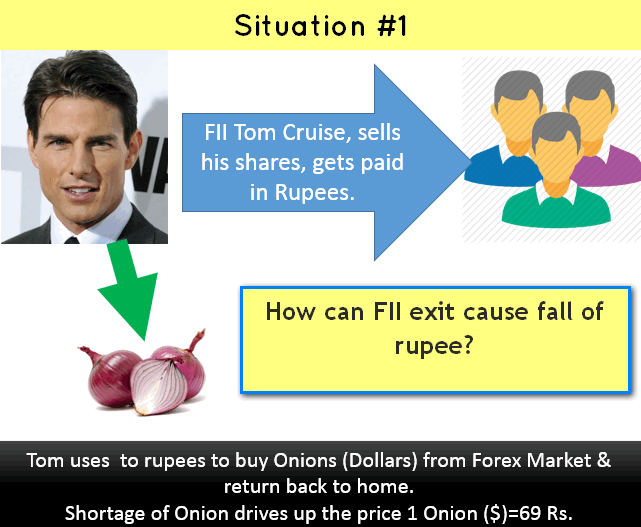
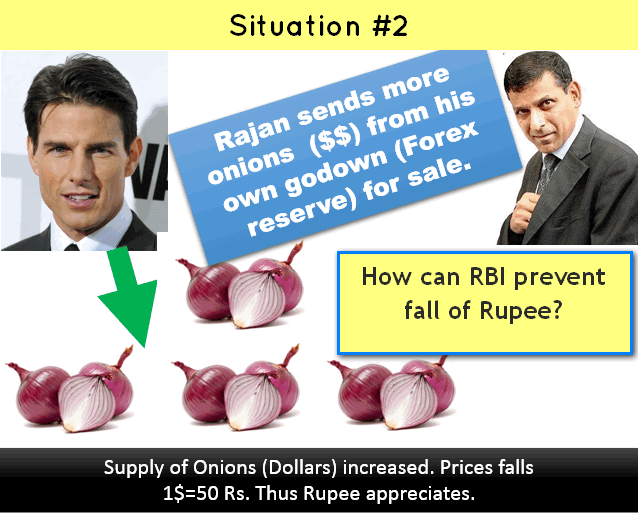
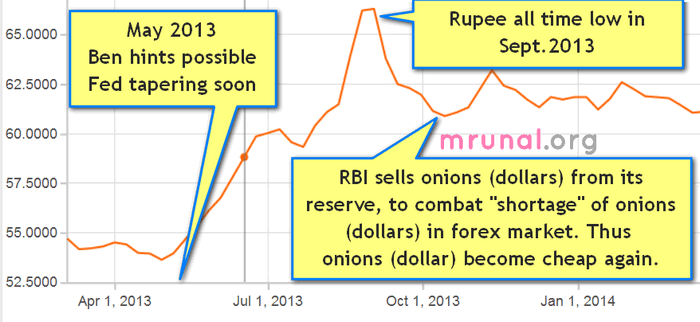
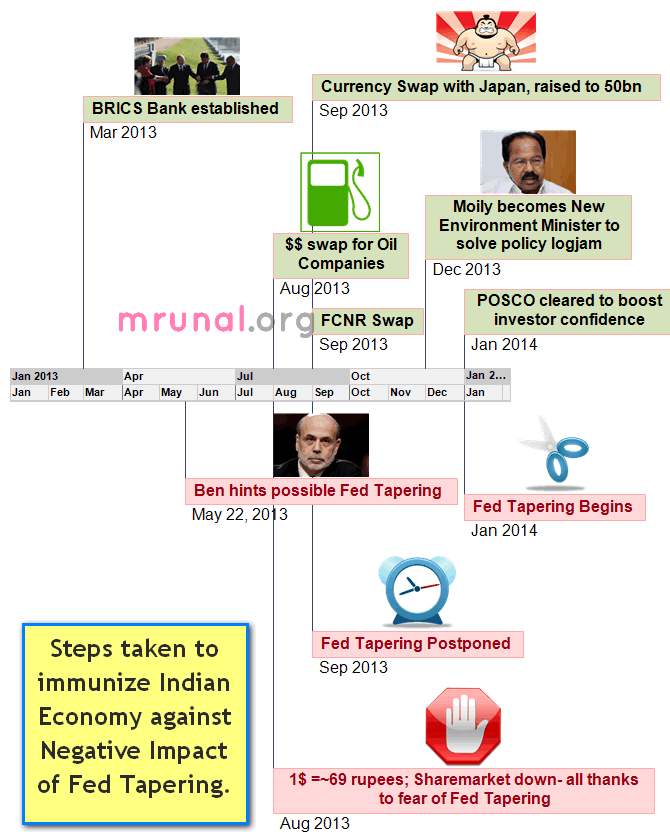
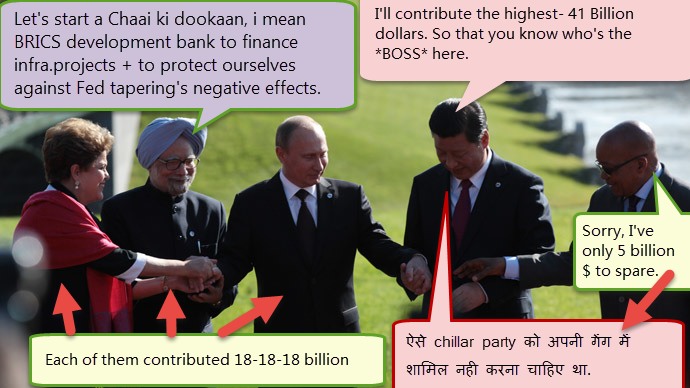
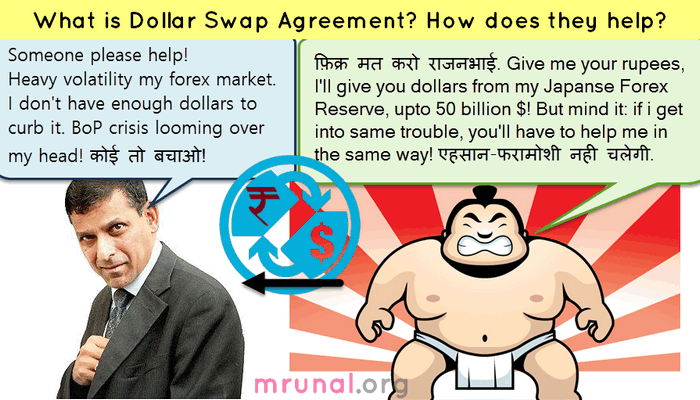
No comments:
Post a Comment
Note: Only a member of this blog may post a comment.